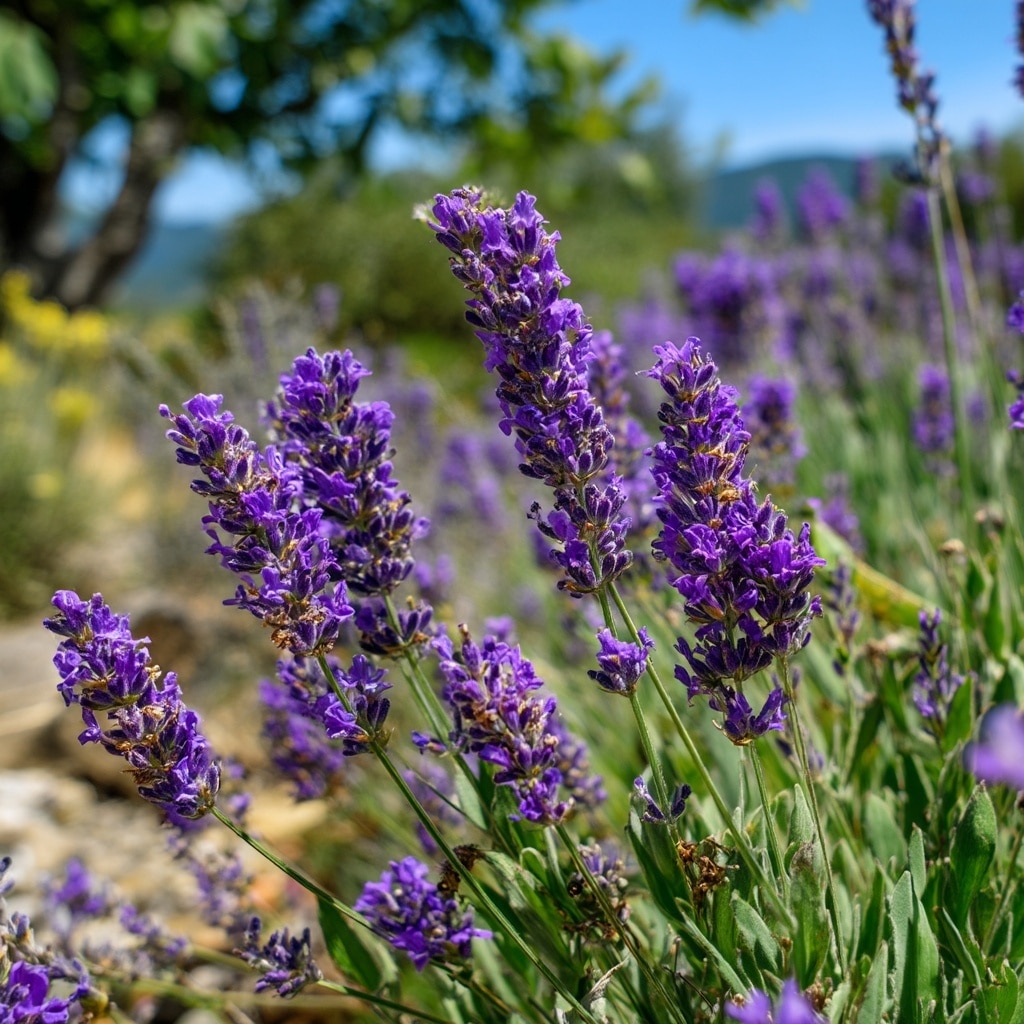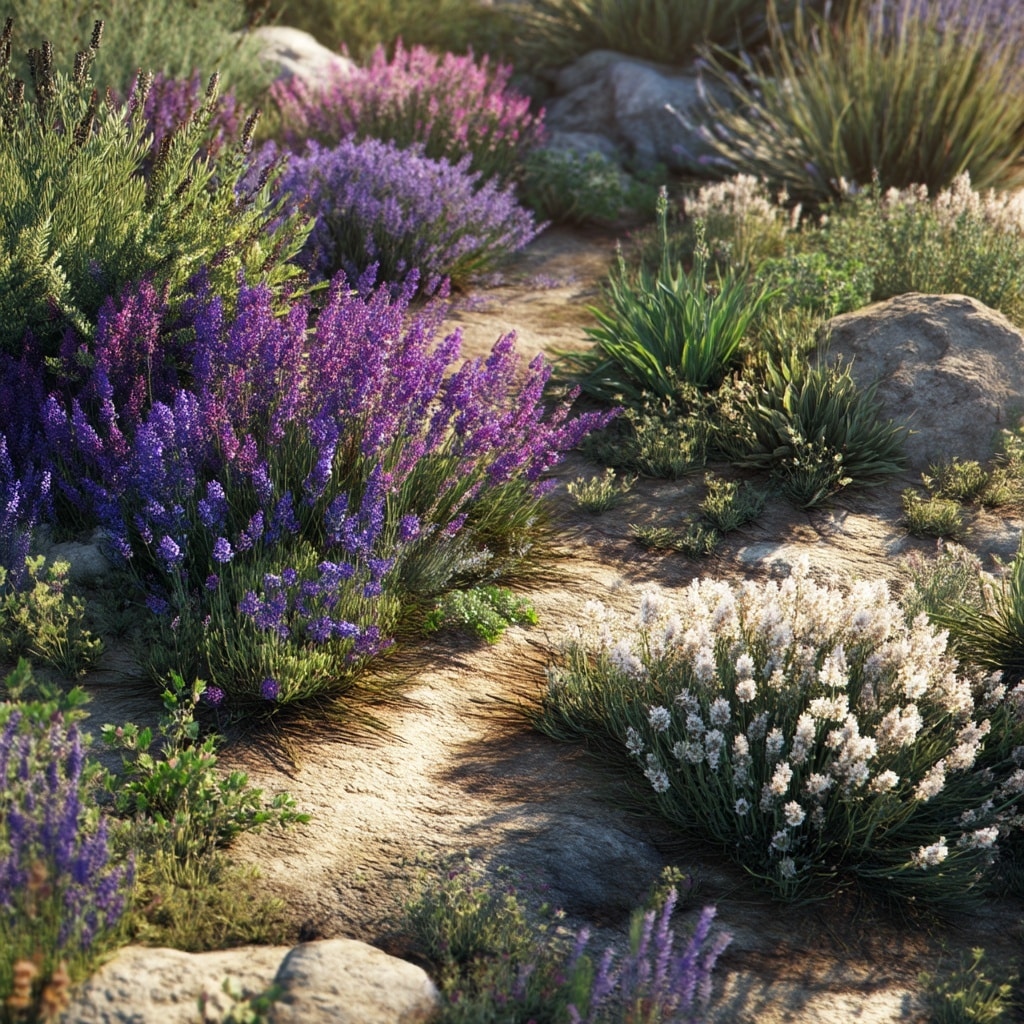Lavender is one of the most beloved plants in the garden world—for good reason. Its aromatic blooms, soft silvery foliage, and easy-going nature make it a favorite for gardeners of all experience levels. Beyond its beauty, lavender also plays a practical role: attracting bees and butterflies while keeping pesky insects at bay.
With so many types available, choosing the right lavender can feel overwhelming. Some varieties thrive in cooler climates, while others love the heat. A few are perfect for edible uses, while others shine in borders or dried arrangements.
If you’re looking to grow lavender for its fabulous fragrance and stunning blooms, understanding the key differences between each type is the first step to success.
Table of Contents
Choosing the Right Type of Lavender
Before planting lavender, it’s important to think about what will work best for your space and goals. Not all lavender varieties grow the same—some prefer dry, rocky soils and intense sun, while others are more tolerant of humidity or cooler conditions.
Start by evaluating your local climate. Does your garden get hot, dry summers or mild, moist ones? Is your soil sandy and fast-draining, or heavier and loamy? These factors will help narrow down the best type of lavender for your yard.
Also consider how you plan to use the plant. Want to cook with it? Look for culinary-safe types. Growing it for visual appeal or to attract pollinators? Choose varieties known for vibrant blooms and strong scent.
English Lavender Varieties

Lavender lovers often start with English lavender, the classic variety known for its elegant look and rich fragrance. Officially named Lavandula angustifolia, it’s considered “true lavender” and is prized for both its beauty and usefulness.
This type blooms in early summer and is especially loved for its sweet aroma, which makes it ideal for sachets, dried arrangements, and homemade skincare. English lavender is also one of the few varieties safe for culinary use—perfect for teas, baked goods, and herb blends.
Popular cultivars include:
- ‘Hidcote’ – Compact and deeply colored
- ‘Munstead’ – An heirloom favorite with soft purple flowers
If you’re looking for a reliable, fragrant, and versatile lavender, English types are a great place to begin.
French Lavender Varieties

French lavender, or Lavandula dentata, stands out for its finely toothed leaves and long-lasting blooms. This variety thrives in warm, dry climates and is a top choice for gardeners in regions with mild winters.
French lavender tends to bloom from mid to late summer and is commonly grown in containers, raised beds, or along sunny pathways. It’s less cold-hardy than English types but makes up for it with its decorative charm and strong fragrance.
A popular cultivar to try:
- ‘Royal Crown’ – Compact and bushy, perfect for cottage gardens or patio pots
If you want a lush, Mediterranean feel in your garden, French lavender adds a lovely touch of color and scent without much fuss.
Spanish Lavender Varieties

Spanish lavender, also known as Lavandula stoechas, brings a bold, exotic look to any garden. It’s easily recognized by its short flower spikes topped with petal-like bracts that resemble rabbit ears—making it one of the most visually unique types of lavender.
This variety thrives in hot, dry climates and is exceptionally drought-tolerant. It also holds up well in humid conditions, which many other lavenders dislike. Though not commonly used in cooking, Spanish lavender is perfect for ornamental displays and pollinator-friendly landscapes.
A standout cultivar:
- ‘Royal Anouk’ – Hardy, aromatic, and ideal for containers or sunny borders
If you’re gardening in a warm region, Spanish lavender offers both resilience and striking beauty.
Portuguese Lavender Varieties

Portuguese lavender, or Lavandula latifolia, is sometimes called spike lavender due to its tall, elegant flower stalks. Native to the western Mediterranean, it features broader leaves than other types and gives off a strong, camphor-like scent.
This variety is an excellent choice for gardeners looking to attract bees, butterflies, and other pollinators. It thrives in dry climates and handles heat and drought exceptionally well. Though less commonly used in ornamental borders, it shines as a companion plant and natural pest deterrent.
Portuguese lavender is also prized for its oil, which is used in soaps and cleaning products thanks to its bold aroma.
For gardeners focused on sustainability and wildlife-friendly planting, this variety offers both fragrance and ecological value.
Lavandin Varieties

Lavandin, or Lavandula x intermedia, is a hybrid lavender created by crossing English lavender with other hardy species. It’s valued for its vigorous growth, cold resistance, and exceptionally strong fragrance.
This type produces long stems and large, showy flower heads, making it ideal for dried bundles and large-scale planting. Lavandin varieties often bloom later than English lavender and tend to have a sharper, more medicinal scent—commonly used in commercial essential oils and bath products.
A well-known cultivar:
- ‘Grosso’ – A popular choice for farms and large gardens, with dense spikes and powerful aroma
If you want a robust lavender that’s tough, productive, and intensely fragrant, lavandin is a smart, low-maintenance choice.
Conclusion
Growing lavender adds more than just fragrance to your garden—it brings beauty, pollinators, and practical benefits all year long. Whether you choose the classic charm of English varieties, the heat-loving toughness of Spanish types, or the bold scent of lavandin hybrids, there’s a lavender suited for every gardener and growing condition.
By understanding the differences between each type, you’ll be able to pick the right one for your space and enjoy healthy plants with vibrant blooms and lasting aroma season after season.




